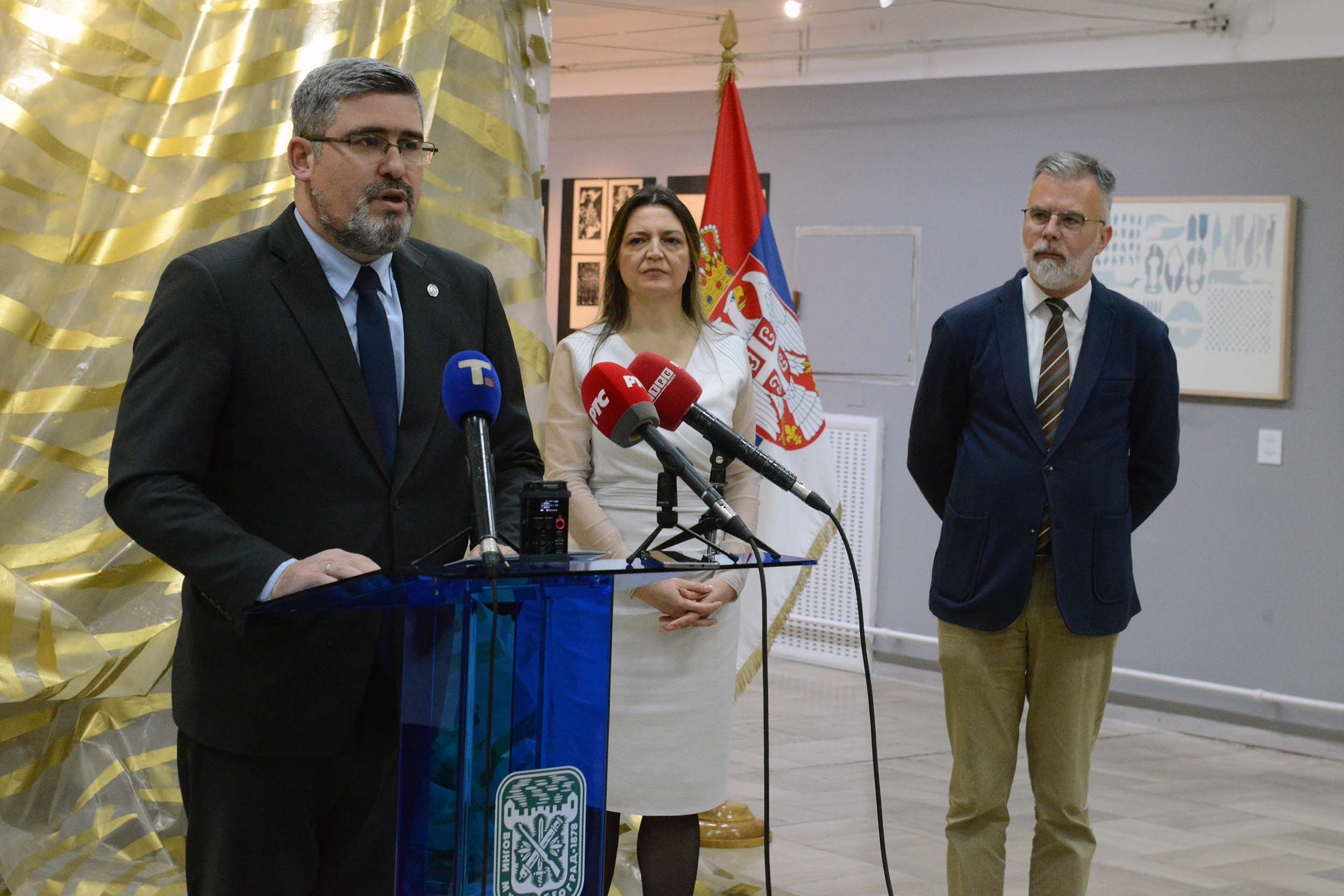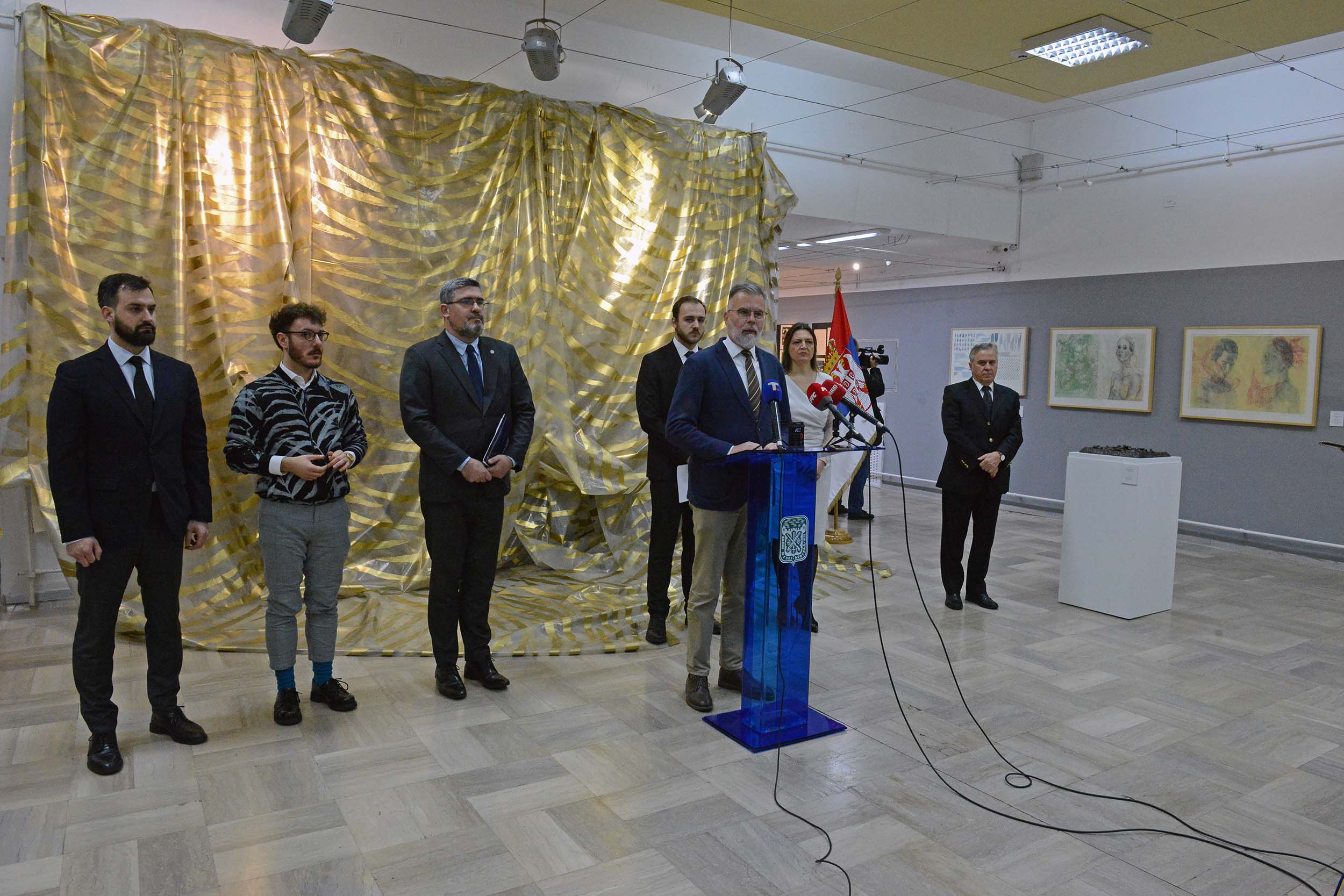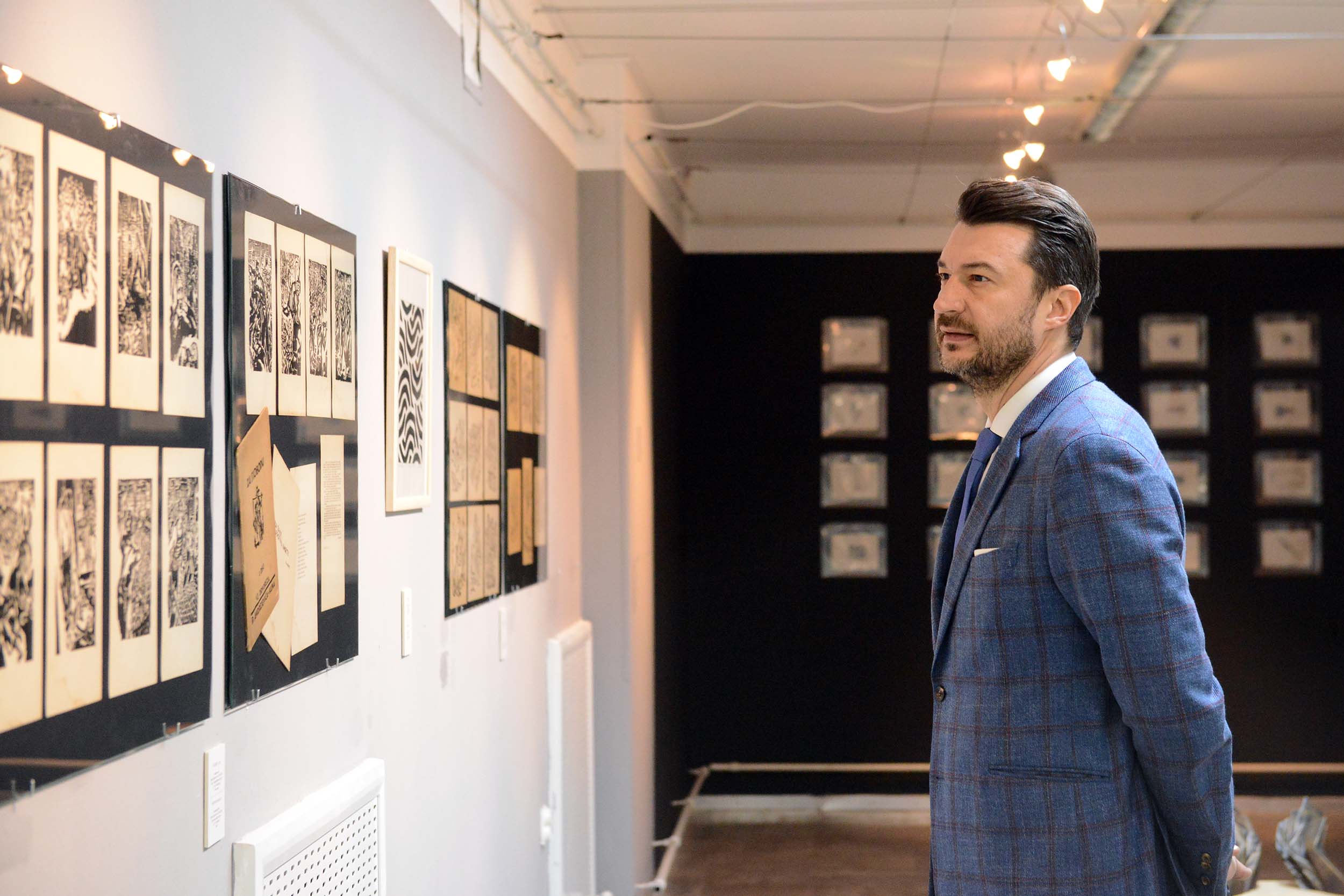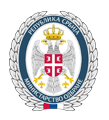14.12.2023.
State Secretary Starović opens exhibition “Bridges of Light – Selected Works of Art from Museum of Genocide Victims’ Collection” in Military Museum
Today, State Secretary at the Ministry of Defence Nemanja Starović opened the exhibition "Bridges of Light – Selected Works of Art from the Museum of Genocide Victims’ Collection" in the Military Museum in Belgrade.
 The exhibition by Nikola Radosavljević, curator at the Museum of Genocide Victims, comprises a selection of approximately 100 works of art that, for the first time since the Museum was established in 1992, are being showcased to the public.
The exhibition by Nikola Radosavljević, curator at the Museum of Genocide Victims, comprises a selection of approximately 100 works of art that, for the first time since the Museum was established in 1992, are being showcased to the public.At the exhibition opening ceremony, State Secretary Starović greeted those present on behalf of Deputy Prime Minister and Minister of Defence Miloš Vučević, saying that it was an honour for him to attend the exhibition of some of the most significant works of Serbian contemporary art in one of the country’s oldest and most prominent cultural institutions.
- They are a reminder of great tragedies - genocide, which forever marked our fate and the fate of our people. This exhibition features the works of authors of various poetic narratives. These selected works and collections depict the places of suffering in the past, with a focus on World War II and the suffering of the Serbian people, primarily questioning our attitude towards the culture of remembrance, the ways in which we remember and forget, but also the way we face our national and personal identity through the prism of heritage and survival - said State Secretary Starović and added that the collection was the result of decades of contemporary creative work, a synthesis of artistic and life experiences.
 According to him, these works are about hope, about love, truth and struggle, ideals that transcend all languages and territories, and are reflected in contemporary art, without which we would not be able to understand each other.
According to him, these works are about hope, about love, truth and struggle, ideals that transcend all languages and territories, and are reflected in contemporary art, without which we would not be able to understand each other.According to Dejan Ristić, director of the Museum of Genocide Victims, who addressed the audience, one does not expect the topic of genocide to be dealt with from the artistic perspective, but through the historical prism of the event, but today's exhibition features works that have never been exhibited before and whose poetic quality, power and performance techniques are captivating.
- These are works created in the period from 1941 to 2023. I would like to say that we are absolutely delighted with the fact that we are presenting these works of art for the first time, that we are speaking about the suffering of our people through art, following the examples of other similar institutions around the world that have been doing this for decades. I can't help but share with you the strong impression and experience I had following the creation of this collection. Some of the works leave you completely speechless - said Ristić.
 Speaking about the importance of the collection, the author of the exhibition, Nikola Radosavljević, said that it was a combination of the culture of remembrance, the history of art and history.
Speaking about the importance of the collection, the author of the exhibition, Nikola Radosavljević, said that it was a combination of the culture of remembrance, the history of art and history.- Upon my arrival at the Museum of Genocide Victims, I quickly realized, thanks to my colleagues, experts, how many narratives are hidden behind each work of art. The culture of remembrance pervades all those spheres of life, especially art, and inspires and teaches people to free themselves from a great fear and trauma through the act of creation. I am very glad that we have managed to display such a large number of works, but first of all to collect and preserve them - said the author of the exhibition.
The president of the Serbian Historical Society, Suzana Rajić, thanked everyone who helped organize this exhibition, as well as the author, who simultaneously introduces visitors into the world of art and history.
 The exhibition is divided into four separate sections - drawings, paintings, graphics and sculptures and represents a diversity of formats, techniques and technological achievements in contemporary visual art. The exhibition opens a dialogue about the time and place of the struggle of the Serbian people in World War II, as well as about the phenomenon of suffering and the concept of genocide in visual arts.
The exhibition is divided into four separate sections - drawings, paintings, graphics and sculptures and represents a diversity of formats, techniques and technological achievements in contemporary visual art. The exhibition opens a dialogue about the time and place of the struggle of the Serbian people in World War II, as well as about the phenomenon of suffering and the concept of genocide in visual arts.The exhibition has been organized thanks to the joint efforts of the Ministry of Defence, the Ministry of Culture and the Museum of Genocide Victims Foundation. The exhibition will be open until January 17, 2024.



